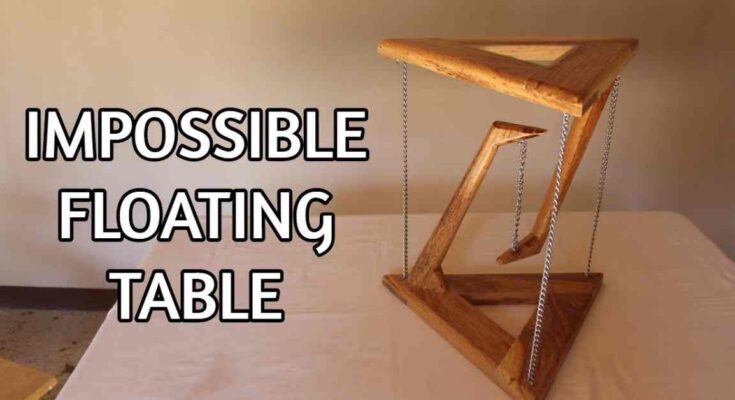Introduction
Tensegrity tables are innovative and visually striking pieces of furniture that leverage the principles of tension and compression to create a floating illusion. These tables not only serve as functional items but also as conversation starters and artistic statements.
Historical Context
The concept of tensegrity, short for “tensional integrity,” was pioneered by architect Buckminster Fuller in the 1960s. This design principle involves a system of isolated components under compression inside a network of continuous tension. The application of tensegrity in furniture design emerged as designers sought new ways to blend art, engineering, and functionality.
Key Principles of Tensegrity
Tensegrity relies on a balance between tension and compression. In a tensegrity table, rigid elements (typically metal rods) are held in place by a network of tensile cables. This arrangement allows the table to maintain structural integrity while appearing to defy gravity.
Types and Categories
- Classic Tensegrity Tables: Simple designs that highlight the basic principles of tensegrity.
- Modern Variations: Incorporating materials like glass, wood, and polymers.
- Custom Designs: Tailored to specific aesthetic preferences or functional needs.
Technical Specifications
- Materials: Commonly used materials include steel rods, nylon cables, and tempered glass.
- Dimensions: Vary widely, from small coffee tables to large dining tables.
- Load Capacity: Dependent on the materials and construction quality.
Applications
- Residential Use: As coffee tables, side tables, and dining tables.
- Commercial Spaces: In offices, waiting areas, and as display pieces in galleries.
- Educational Tools: Demonstrating principles of physics and engineering.
Benefits
- Aesthetic Appeal: Unique and modern design that enhances any space.
- Educational Value: Demonstrates fundamental principles of physics.
- Durability: High-quality materials ensure longevity.
Challenges and Limitations
- Complexity in Construction: Requires precision and expertise.
- Cost: Can be more expensive than traditional tables due to the complexity of design and materials used.
- Stability Concerns: Must be properly balanced to ensure stability.
Latest Innovations
Recent advancements in materials science have introduced new possibilities for tensegrity tables, including the use of carbon fiber and advanced polymers, which offer increased strength and lighter weight.
Future Prospects
The future of tensegrity tables lies in continued innovation and customization. As 3D printing technology advances, the ability to create intricate and personalized designs will become more accessible.
Comparative Analysis
Tensegrity tables vs. traditional tables:
- Aesthetics: Tensegrity tables offer a more modern and unique look.
- Functionality: Traditional tables are generally more stable and easier to produce.
- Cost: Tensegrity tables are often more expensive due to their complexity.
User Guides or Tutorials
Building a Tensegrity Table: A Step-by-Step Guide
- Gather Materials: Steel rods, cables, connectors, and tools.
- Construct the Frame: Assemble the rods into the basic structure.
- Attach the Cables: Secure the tensile cables to create tension.
- Fine-Tune the Balance: Adjust the cables to ensure the table is level.
Conclusion
Tensegrity tables are a testament to the beauty of engineering and design. Their unique construction and visual appeal make them a standout addition to any space. As technology and materials continue to evolve, so too will the possibilities for these fascinating pieces of furniture.
SEO Meta Description: Discover the innovative design and engineering behind tensegrity tables. Learn about their history, key principles, types, applications, and future prospects in this comprehensive guide.
SEO Optimized Title: The Ultimate Guide to Tensegrity Tables: Design, Applications, and Future Trends
Slug: tensegrity-table-guide




